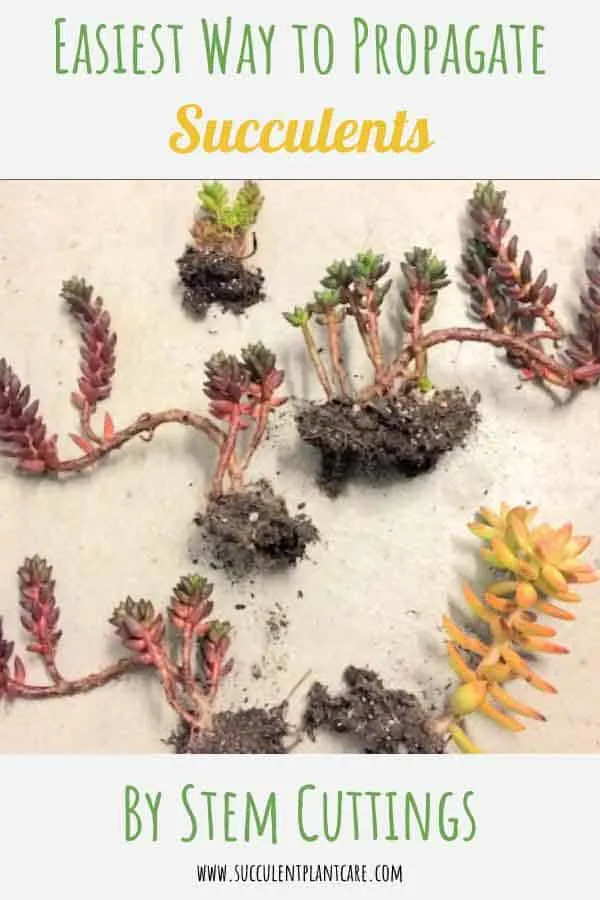What is Propagation?
One way I multiply my succulent collection is through propagation. I was intrigued when I first heard about succulent propagation. When I learned that I can reproduce my own plants for free, I was instantly hooked.
I started reading up and learning more about succulent propagation. Plant propagation is the process of creating new plants from the plants you already have. In the wild, propagation from seeds is the most common method.

This is achieved from flowering, pollination, fertilization, and eventually seed formation. As natural habitats of succulents and cacti decline, the need to propagate and maintain these species in cultivation becomes more and more crucial for their continued existence.
There are several ways to propagate succulent plants. Certain species are easier to propagate than others. From my own experience, I have had the greatest success from stem propagation. Stem propagation is pretty straight forward. You cut off a piece of stem from your plant, wait for it to dry and callous for a few days, then stick the dried end into the soil. It roots in a few weeks and you have yourself a cloned version of your original plant. If you want more in-depth details and information on succulent propagation, click on “Detailed Techniques on Succulent Propagation.”
My Success Stories from Stem Propagation
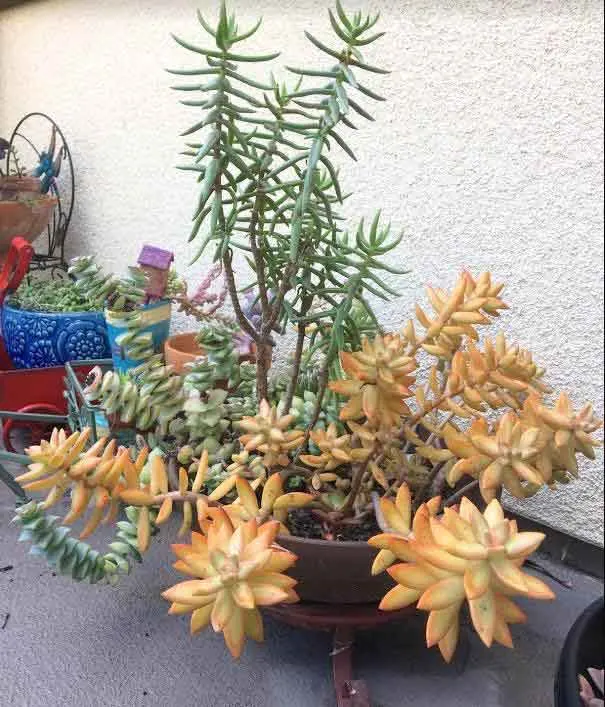
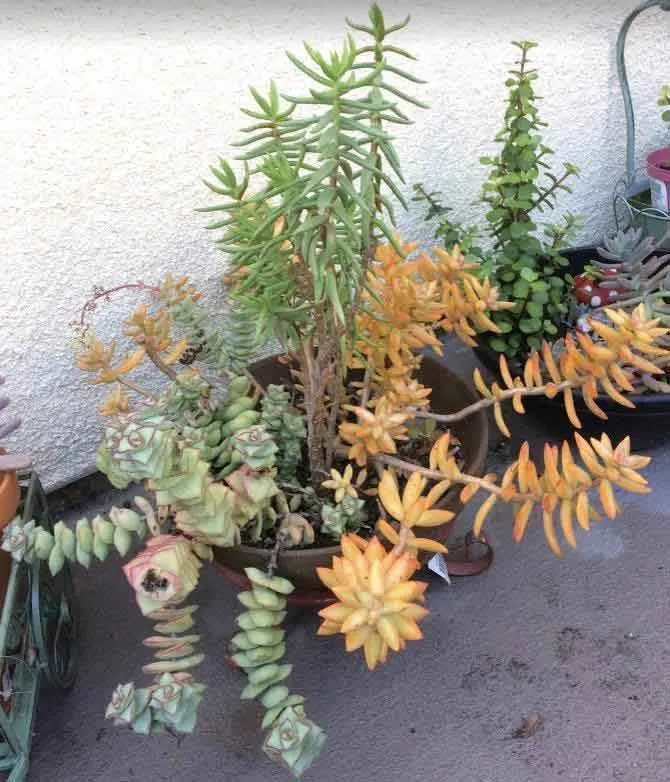
These are pictures of my very first succulent arrangement that I had put together about five years ago. The plants have been in this same pot for about five years. This planter was not as full as it is now when I first planted these plants. They all started out as small, starter plants. After a few years, the plants went through a period where they were not thriving anymore and were looking sad. I have never not repotted these plants ever and the soil was probably depleted of nutrients after a couple of years. The plants are very root bound and it will be quite a task to remove the plants to repot. Instead of repotting, I started fertilizing the plants during spring to early fall and the plants started looking vibrant again.
From this original pot I have taken stem cuttings and created mini clones out of these original plants. I got lucky that the plants I have here are all pretty easy to propagate from stem cuttings. I did not know that back then when I first started propagating, but these plants were some of the easiest ones to propagate from stem cuttings. Success in the early stages was really encouraging and helped me in the process of learning more about propagation.
This planter contains three different plants: Sedum Nussbaumerianum (Coppertone Stonecrop), Crassula Tetragona (Miniature Pine Tree), and Crassula Perforata (String of Buttons). From this planter I have gotten cuttings and created different arrangements over the years. I have also given away cuttings to friends and family.
Here are some of the cuttings from this planter that I have growing in other pots:
Sedum Nussbaumerianum (Coppertone Stonecrop) Propagation from Stem Cuttings
Native to Mexico, these are low growing perennial with pretty rosettes. The plant’s color ranges from light green in the shade to coppery orange in full sun and heat. They produce round clusters of white flowers that are lightly fragrant. These plants are drought and heat tolerant. They can trail when mature and look great in hanging containers.
My very first ‘baby’ that got me into this hobby
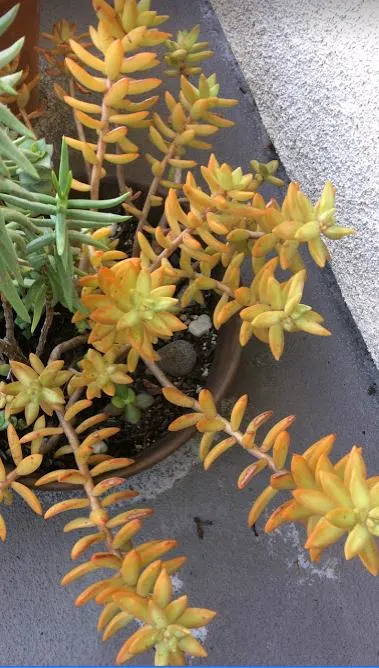

As you can see, I have taken stem cuttings and used them in different arrangements. I have also started a new pot on its own and it’s happily growing babies.
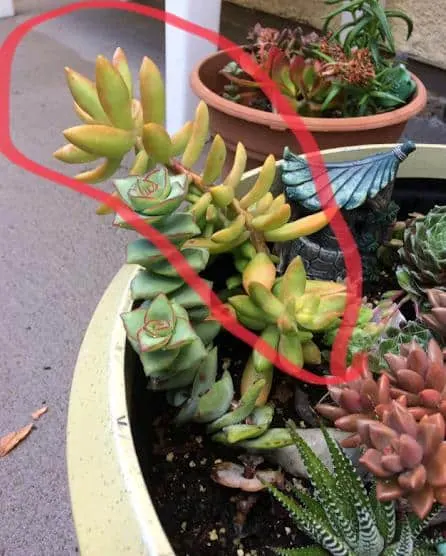
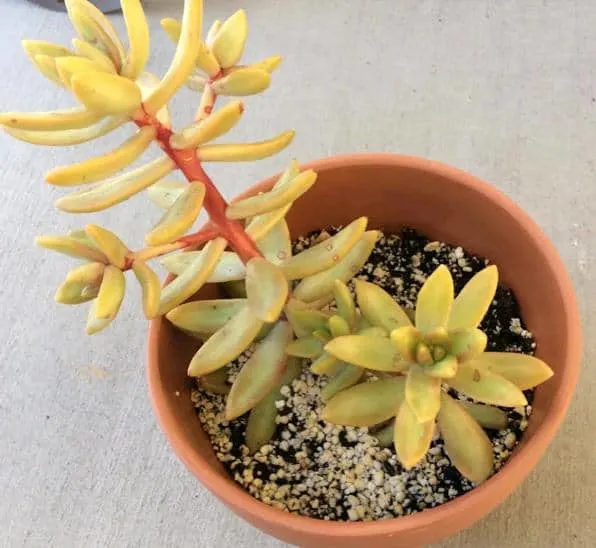
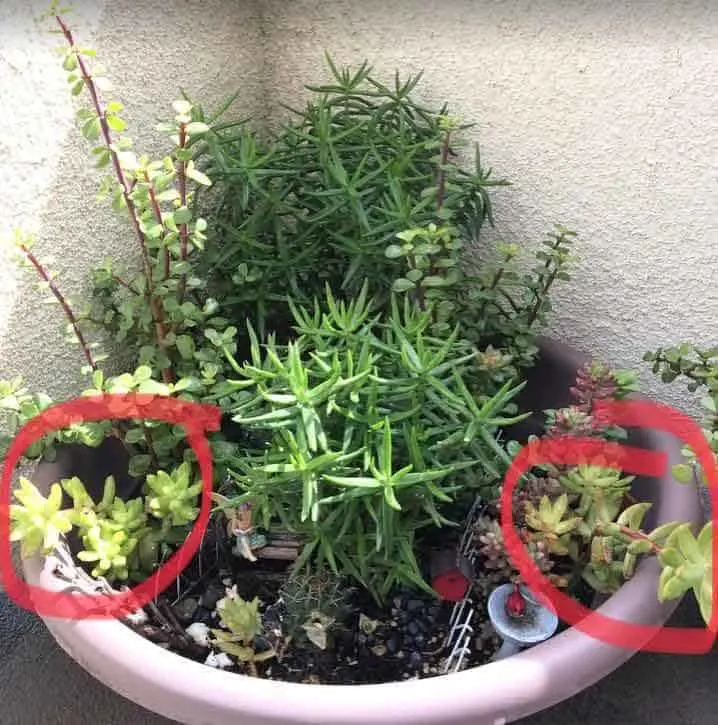
Crassula Tetragona (Miniature Pine Tree) Propagation from Stem Cuttings
Native to South Africa, this miniature pine tree-looking succulents can grow up to 3 feet tall. They form shrubs and become tree-like as they grow. They produce small white flowers that appear at the tips of the plant. These are very easy, low maintenance plants and one of the easiest ones to propagate from stem cuttings.
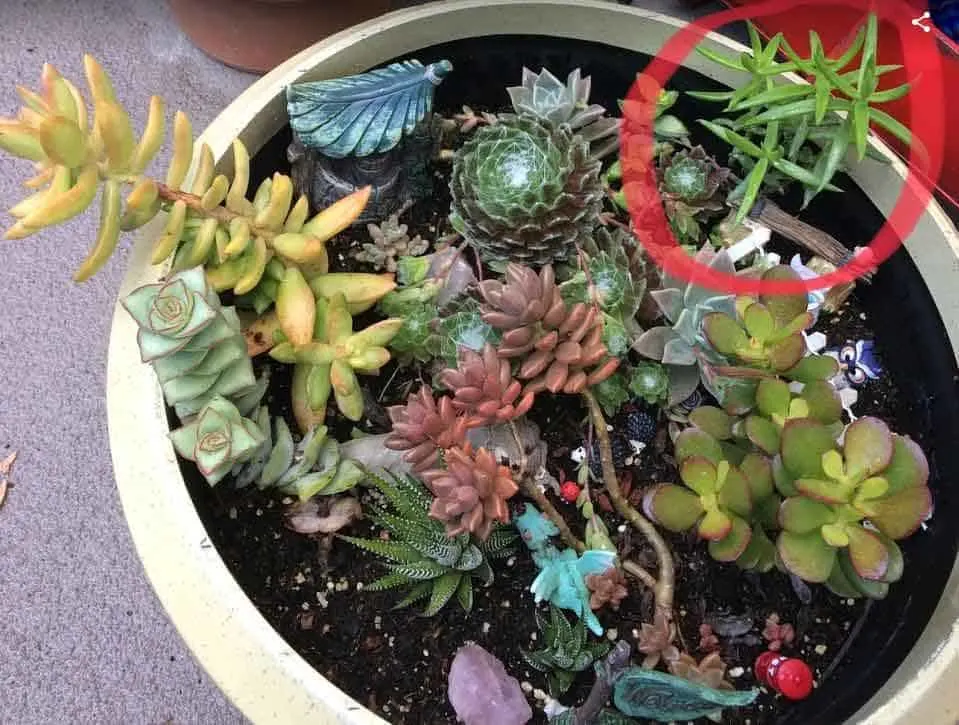
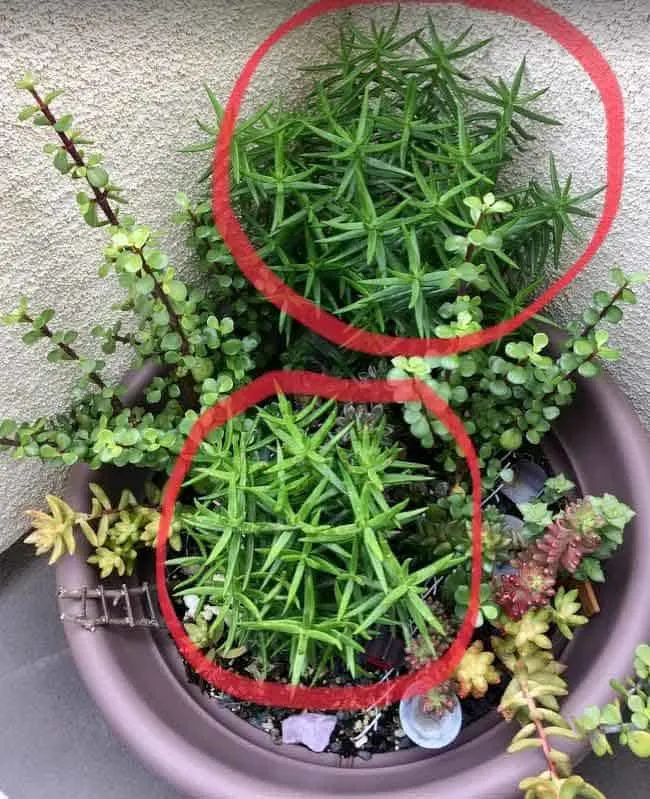
You might notice that some of the stem cuttings look fuller and healthier than the original plant where the cuttings were taken from. Obtaining cuttings from the plant and putting them in fresh potting mix gives the cuttings a chance to expand and grow.
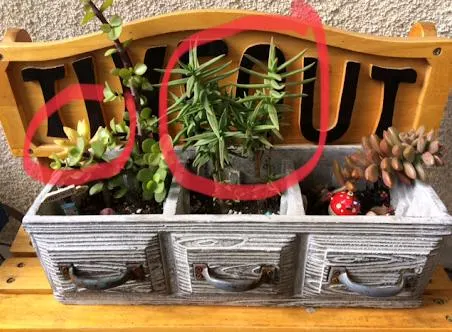

Crassula Perforata (String of Buttons) Propagation from Stem Cuttings
Crassula Perforata (String of Buttons) are attractive succulents that add a pretty accent to your succulent arrangement. They have light green leaven with edges that are rosy pink in color. These plants sprawl and stack on top of each other as they grow and mature. They produce clusters of small white and yellow flowers.
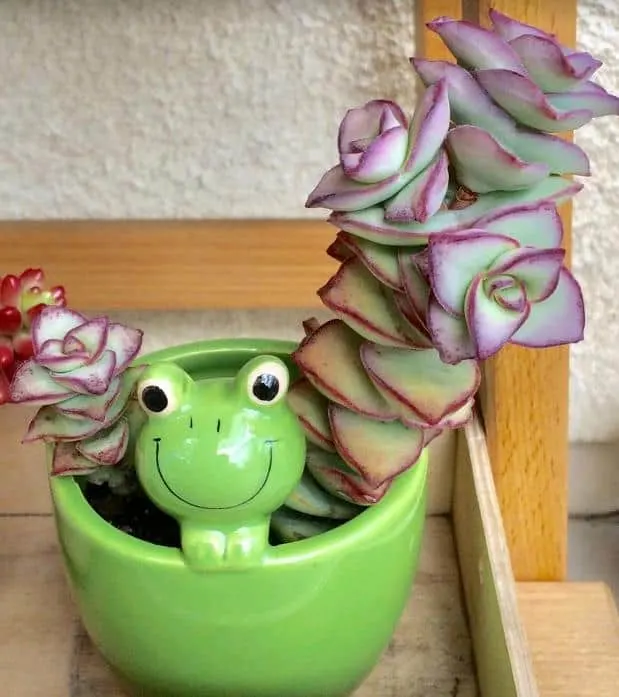
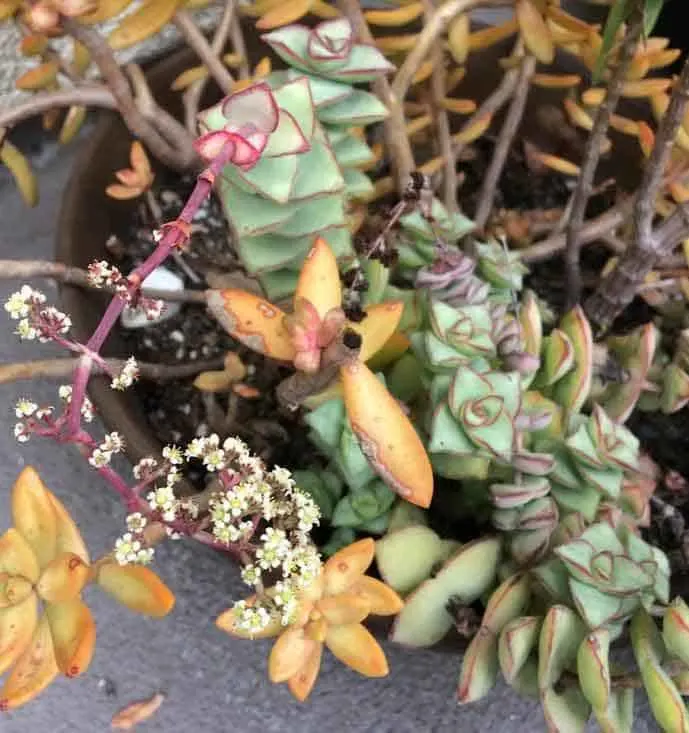
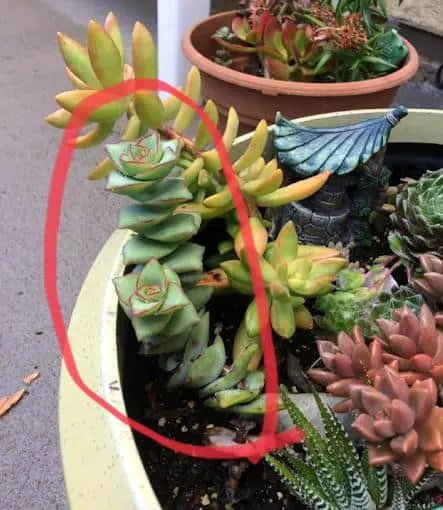
In my experience, these are not as easy to propagate as the other two on top. Prone to rot and sun damage if left unattended for too long. But this can be just my experience. They are still relatively easy to propagate from stem cuttings.These can also be propagated from leaf cuttings.
Two other plants that are easy to propagate from stem cuttings:
Portulacaria Afra (Elephant Bush) Propagation from Stem Cuttings
Another plant that I have had extremely high success rate from stem propagation is the Portulacaria Afra (Elephant Bush). Native to South Africa, this is a hardy, low maintenance plant that is very easy to grow. They serve as food for elephants in their native habitat and can grow up to 20 feet tall. They have glossy green leaves that start out as a small bush that eventually grow tree-like. The stem gets thicker over time as the plant matures.
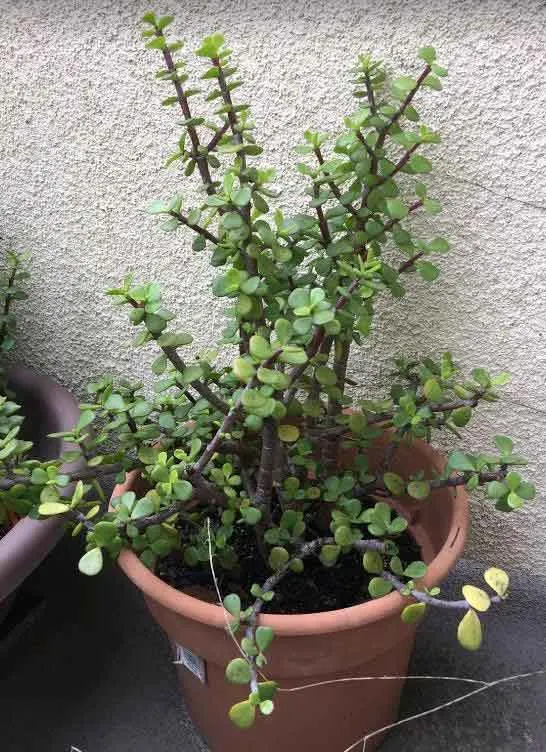
I was first attracted to this plant because I thought I was buying a mini jade plant. Sometimes referred to as ‘Dwarf Jade’ or ‘Miniature Jade’, it has no relation to the actual jade plant. I use it as fillers or accents for a lot of my arrangements. I have also given cuttings away.
I admit to neglecting this pot. If you look closely you will see that some of the leaves are turning yellow and discoloring. It was sitting in the wrong soil medium for a while and I did not repot it out of its original nursery pot for years. I finally got around to repotting it with fresh, well draining potting mix and this plant has made a come back.
This plant is so easy to propagate from stem cuttings that I pretty much stick them anywhere I want or any space I need to fill. The cuttings root, grow and thrive easily with very little care and attention. As you can see, some of these plant cuttings look much healthier than the original plant they came from.
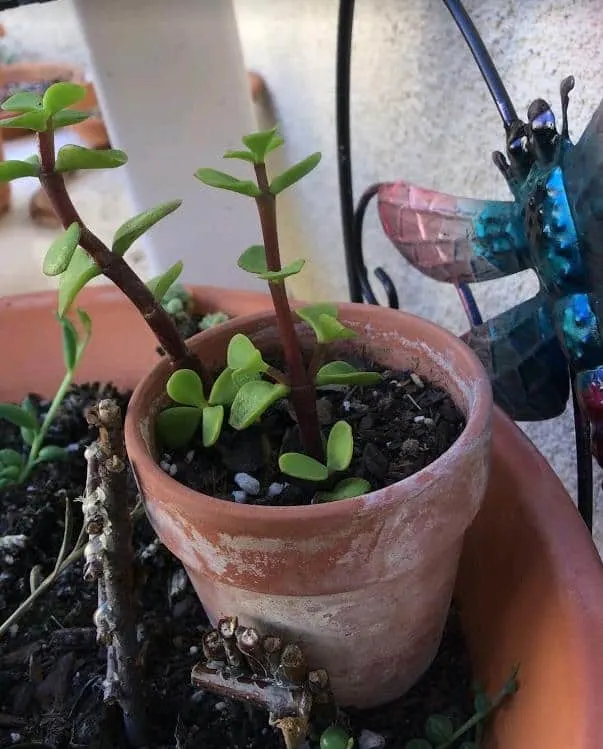
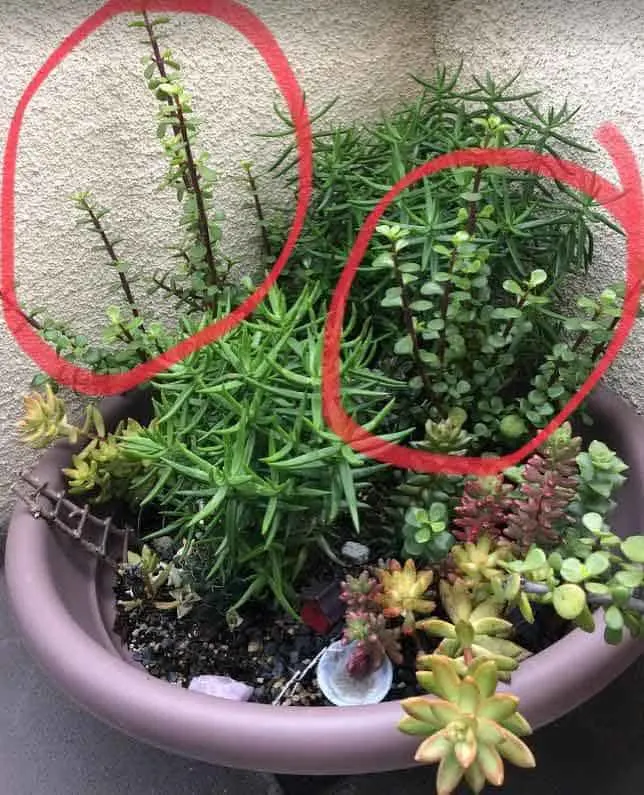
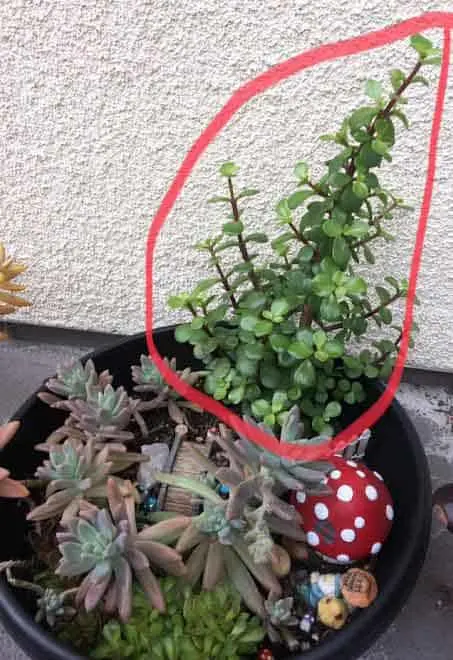
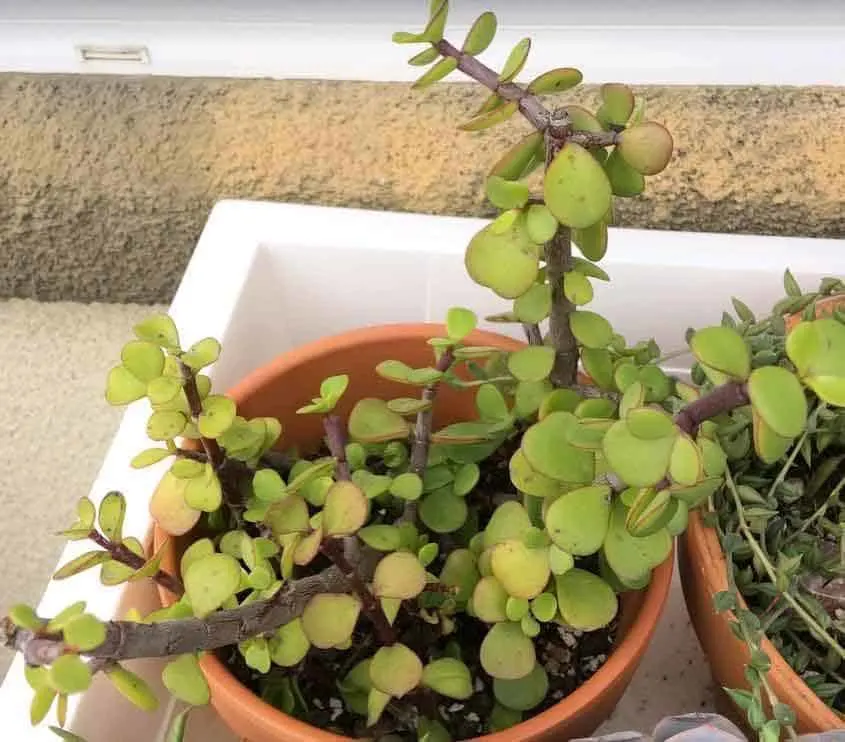
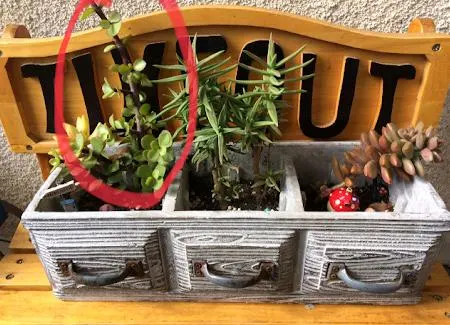
Aeonium ‘Blushing Beauty’ Propagation from Stem Cuttings
Aeonium ‘Blushing Beauty’ is a hybrid, made from a cross of two different aeoniums. It produces rosettes that changes colors dramatically depending on the season and sun exposure. It can go from green to red to purplish. Aeoniums shut down in the summer or during extreme heat. Their leaves will curl and drop during extreme heat or drought.
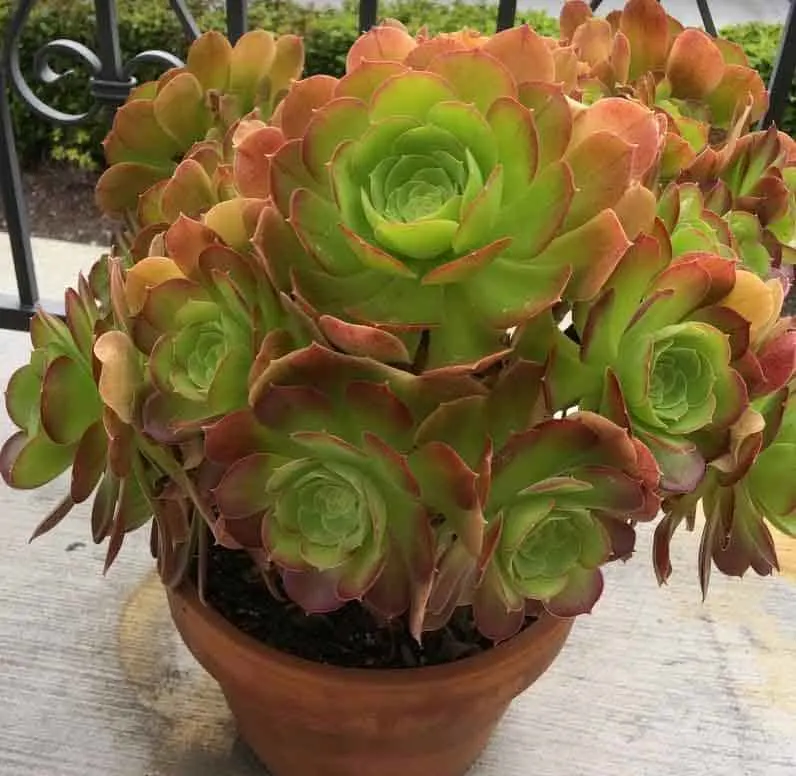
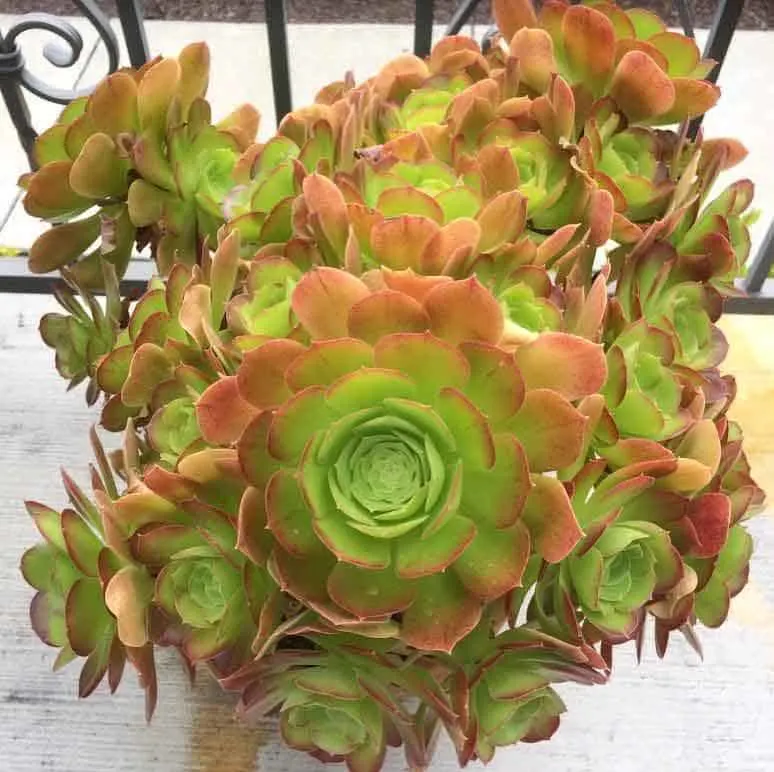
This is the original pot where I planted the three aeonium rosettes my co-worker had given me at least 4-5 years ago. The three rosettes have grown into this plant you see here. Aeoniums in clay pots become very root bound and difficult to remove out of the pot. Two years ago these aeoniums started looking dull and lifeless and I knew I had to repot or introduce nutrients into the soil. These plants have not been repotted at all. I tried to pull the plants out of the pot but it was not budging. The next best thing I could do was add nutrients into the soil or fertilize. The plants are looking vibrant again after fertilization and rainwater. These plants love rainwater.
Below are plants grown from cuttings from this original plant above:
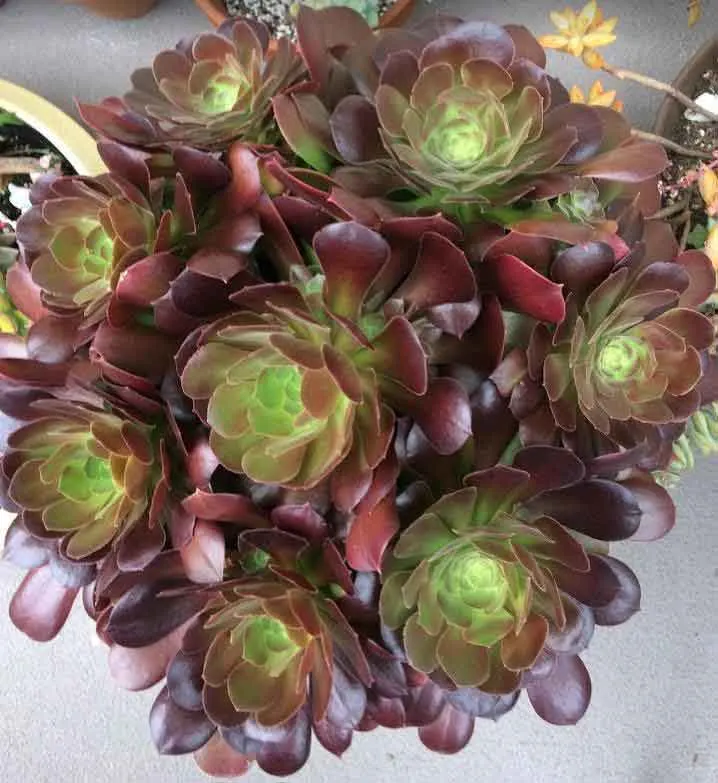
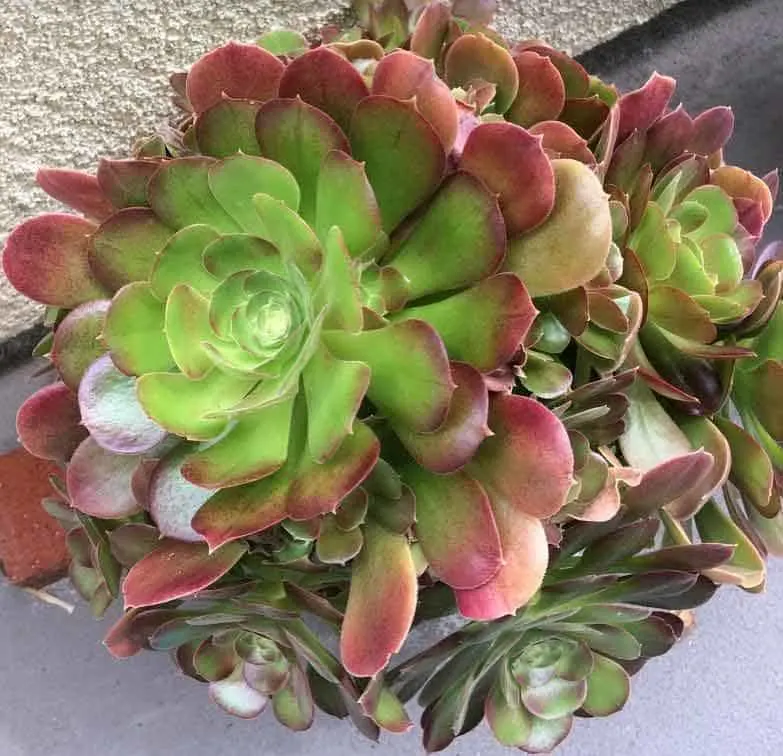
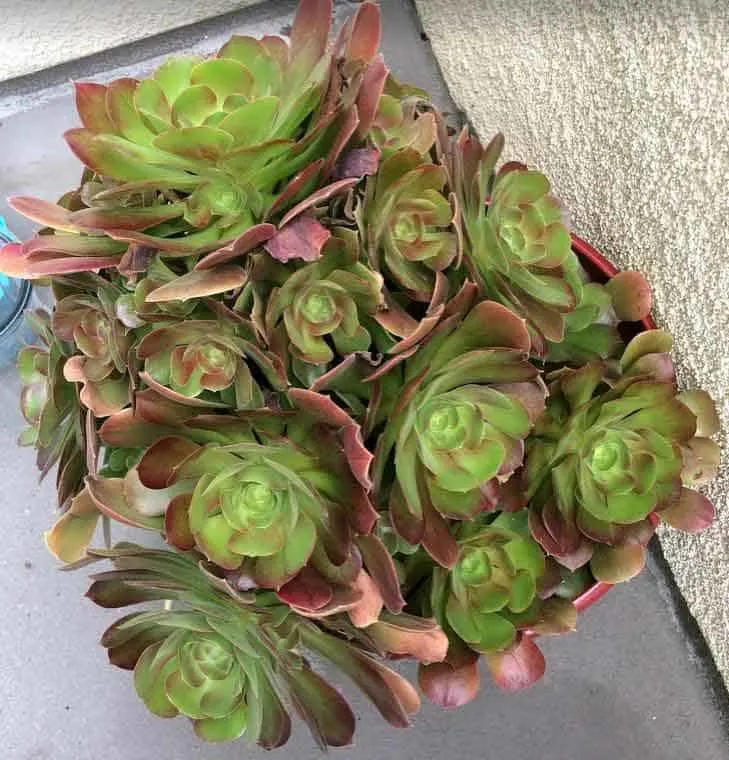
These plants are from stem cuttings of the original plant above. These aeoniums are very easy to propagate from stem cuttings. If you are new to propagation, these are great plants to start propagating from. The stems root fairly fast and grow rapidly during the growing season. The plants from the cuttings actually look fuller and healthier than the original plant I had taken them from. Sometimes the plants do better when removed from the mother plant. This way, you give the mother plant a chance to rest and conserve its energy for growth. It also gives the cuttings room to grow more when repotted in their own pot with fresh potting mix. You also give yourself more new plants.
Aeoniums produce pups that emerge from their rosettes. Sometimes new plants develop from the stems. These plants are monocarpic and die after flowering. Notice how the plants have different colors even though they came from the same plant? These pictures were all taken around the same time. The color difference is due to the different sun exposure and intensity each plant receives. The lightest one receives intense, full afternoon sun. The darkest one receives bright morning sun. The medium colored one receives filtered afternoon sun.
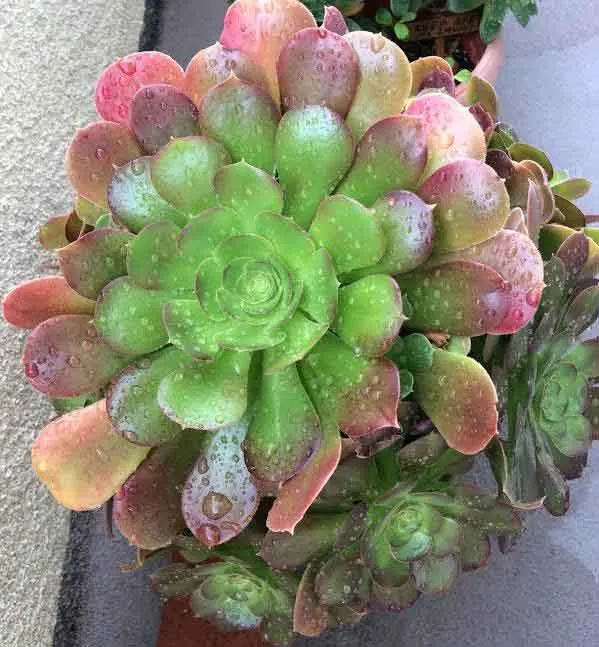
See the difference rainwater does for these aeoniums
(Same plant as the one above)
From my experience with succulent propagation, I definitely have had the greatest success from stem cuttings. For step by step instructions on how to propagate from stem cuttings, click on “Step-by-Step Guide to Succulent Propagation”.
For more succulent propagation success stories, click on “What is Succulent Propagation?”.
